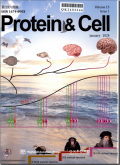Hepatitis A virus exhibits a structure unique among picornaviruses
Hepatitis A,which is a major global health problem (Nainan et al.,2006),is caused by hepatitis A virus (HAV).Approximately 1.4 cases of hepatitis A have been reported annually.HAV belongs to the family of Picornaviridae and genus Hepatovirus,which is a sole member of this family.HAV has radically different properties from those of other picornaviruses.First,HAV is extremely resistant to degradation caused by environmental conditions,which include thermal denaturation (i.e.,HAV survives at 70℃ for up to 10 min),acid treatment (i.e.,pH 1 for 2 h at room temperature),20% ether and chloroform,and detergent inactivation (i.e.,HAV survives at 37℃ for 30 min in 1% SDS).Second,the HAV has a highly de-optimized codon usage and grows slowly in a tissue culture.Third,VP1-2A or PX,which is a 67-residue C-terminal extension of VP1,has been implicated in the particle assembly (Graff et al.,1999) of HAV;further,particles contain an extension shroud in a host membrane to produce enveloped viruses (Feng et al.,2013).
6
2015-05-20(万方平台首次上网日期,不代表论文的发表时间)
79-80






